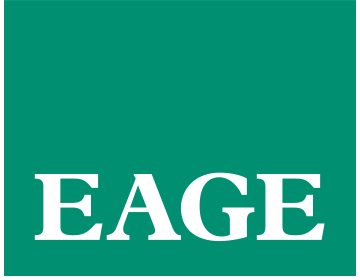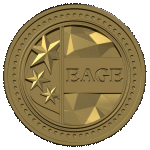Besides the Board functions that are described in the Constitution (President, Vice- President, Secretary-Treasurer and Chairs of the Divisions) there are the following Board Members, each of whom is elected for a period of two years, and may be re-elected twice to a maximum of six years of tenure (three terms), according to the Constitution:
- Technical Programme Officer
- Publications Officer
- Education Officer
- Membership and Cooperation Officer
- The Vice-President is, in addition to his/her constitutional duties, responsible for developing the 5 year strategy of the Association.
- The Technical Programme Officer is responsible for the technical content of the Annual Conference. This includes the acquisition, selection and programming of papers for the technical sessions and the organisation and co-ordination of courses, workshops, seminars, field trips, etc. The Technical Programme Officer is also responsible for the technical content of other EAGE-organised conferences and for the technical input of EAGE in cases of EAGE involvement with the technical programmes of other conferences and workshops.
- The Publications Officer is responsible for the EAGE official journal and all journals published under the EAGE name.
- The Education Officer is responsible for the EAGE Education Programme and for matters concerning students and their relationship with EAGE.
- The Membership and Cooperation Officer is responsible for promoting interactions between EAGE members and for cooperation and development with local chapters, special interest groups and associated societies.
Committees and Councils are established according to the EAGE Constitution and Bylaws and unless otherwise stated are staffed by voluntary members of the Association approved by the Board. Members serve for a period of two years in the first instance, renewable twice for a maximum tenure of six years, unless otherwise stated.
The membership of each Committee, Council and the Board should preferably reflect the Association’s membership variety of age, gender and regional diversity. The goal is that each consist of a minimum of 20% female members.
- The Board may appoint Advisors to assist the Board with the fulfilment of the mission of the Association.
- Regional Advisors are appointed to support the development of the Association within a specific region spanning multiple countries. Regional Advisors liaise with the Regional Manager.
- Country Advisors are appointed to support the development of the Association within specific countries. Country Advisors liaise with the Regional Manager.
- Advisors serve for a period of two years in the first instance, renewable twice for a maximum tenure of six years.
- Regional Councils may be constituted by the Board in regions where the number of EAGE members and/or the level of membership activity warrants such a body.
- The purpose of a Regional Council is to support the EAGE regional and Head Offices in coordinating EAGE activities with members, local chapters and associated societies within the region.
- By-Laws of Regional Councils are incorporated into the EAGE By-Laws as Appendices to this document.
The following permanent committees are in place:
- Technical Programme Committee (TPC)
The TPC is chaired by the EAGE Technical Programme Officer. Its members are the Technical Programme Representatives of the Divisions, representing the various disciplines. The Chairs of the autonomous IOR and the ECMOR Committees may also be co-opted onto the TPC by mutual consent between the Chairs and the EAGE TPO. TPC members are nominated by the TPO and the Divisional Chairs.The TPC supports the technical programme of the Annual Conference and other EAGE conferences, workshops, meetings etc. It also supports the technical programme of other events in which the EAGE is involved. The work of the TPC comprises the acquisition, evaluation, selection and programming of oral and poster papers, workshops, field trips, etc. and assistance to the Board in the long-term development of the Technical Programme. - Local Advisory Committees on Annual Conferences (LAC)
A LAC is established two years ahead of each EAGE Annual Conference. The LAC is consulted as appropriate on other matters relating to the organisation of the Annual Conference. The LAC assists with topic selection and organisation of special sessions, workshops, field trips and short courses at the Conference. The Board appoints the Chair, who subsequently forms the Committee. It has representatives from various sections of industry and academia who are preferably, but not necessarily, members of EAGE. Certain members of the EAGE TPC are also members of a LAC for coordination of the technical programme. The secretary of the LAC acts as its focal point and communicates with the EAGE Office. It reports to the Board through the vice-president and fully cooperates with the Board and the EAGE Conference staff. - Research Committee (RC)
The Chair of the RC is elected by the RC members and serves for a period of two years, renewable once for a maximum tenure of four years. The RC Chair is an experienced, active member of the RC. RC members have recognised areas of expertise. New RC members are invited by the Chair, subject to approval by the existing RC members. The procedure for appointment of new members and the election of its chair is published on the RC web pages. Levels of activity acceptable to the Chair are required for continued membership. The RC reports to the Technical Programme Officer.
The RC is responsible for specific workshops and supports the preparation of the technical programme of the Annual Conference. - Publications Committee (PC)
The PC is chaired by the EAGE Publications Officer who is also the Chair of the Editorial Board of First Break. The PC members are the Chief Editors of the journals bearing the EAGE logo, currently Geophysical Prospecting, Near Surface Geophysics, Petroleum Geoscience, Basin Research and Geoenergy. PC members are not necessarily members of EAGE and their tenure is determined by the management policies of each journal.
The PC coordinates the EAGE journals, develops editorial and marketing policy for the journals, supports the Publications Officer and gives advice to the Board. - Committee on Membership and Cooperation (CMC)
The CMC is chaired by the Membership and Cooperation Officer (MCO). The CMC enhances interactions among EAGE members, supports the creation of local chapters, oversees the activities of local chapters and groups of special interest, and makes recommendations to the Board for the financial support of events organized by local chapters and affiliated societies in developing countries and regions. The CMC evaluates and decides on every application for financial support from local chapters and associated societies within the guidelines and budget set by the Board. The Office administrates the applications for financial support and advises the CMC on the suitability of each application and reports the budget to the Board.
The CMC evaluates, select and recommend nominations for certificates of Recognition of Effort & Achievement to the Board. Guidelines for certificates of Recognition of Effort & Achievement are available from the office. - Student Affairs Committee (SAC)
The SAC comprises a Chair and at least four other members. The SAC reports to the Education Officer. The SAC supports student activities, represents student issues to the Board and encourages student enrolment in EAGE. - Education Committee (EC)
The EC is chaired by the EAGE Education Officer. The EC objective is to create and support a coherent and integrated programme of courses, lectures and education materials for EAGE members directly, through local chapters or in collaboration with Associated or sister societies. - Awards Committee (AC)
The AC comprises a Chair and a Vice-Chair within a team of voting members who cover the geo-scientific and related engineering disciplines. There are three channels whereby voting members are appointed: by nomination, by being a former EAGE president, or by being a recipient of the Erasmus or Wegener awards.
Nominated members are proposed by the Chair and approved by the Board at the time of the Annual Conference, or as necessary. Nominated members serve for a period of two years in the first instance, renewable for a maximum of two more two-year periods by mutual agreement between member, Chair and Board, commencing from the date of Board approval. A nominated member with prior service on the AC is limited to a maximum cumulative tenure of six years.
The five most recent past EAGE Presidents are automatically invited to serve in the AC for a single tenure of five years in a rolling sequence, commencing from the date of leaving office.
The two most recent Erasmus and two most recent Wegener Awardees are automatically invited to serve in the AC for a single two-year tenure in a rolling sequence, commencing from the date of receipt of the award.
All members of the Awards Committee must be EAGE members in good standing. The Chair and Vice-Chair positions are each held for two years unless otherwise approved by the Board. The Vice-Chair normally succeeds the Chair in that position. Should the Chair or Vice-Chair be a former President or Award recipient then their tenure becomes that of a nominated member, commencing from their date of first appointment. The duties of the Chair and Vice-Chair are defined by the AC members, but must include timely coordination of the annual Awards nomination and selection process, interfacing with the Head Office as needed for that process, and timely communication of Award recommendations to the Board.
All AC voting members are independent of the Board. The Chair has the duty to keep the committee populated and balanced as to geographical distribution and professional background. The EAGE Vice President, or Vice President-Elect at the Board’s discretion, is an ex-officio non-voting member of the AC, and is responsible for liaison with the Board.
The AC recommends candidates for statutory EAGE Awards no later than 1st December of each year, so that these may be considered by the EAGE Board at the December Board meeting. The Best Papers Awards will be nominated by 14th February in time for the March Board Meeting, so that refereed publications in the last annual issues of First Break and cited EAGE international journals can be given due consideration. The Board has the final decision on the AC recommendations. The Board is not permitted to make counter or new proposals. EAGE is not obligated to offer every Award in every year. The number of annual Award types is currently fixed at twelve. Most Awards are limited to one candidate or group of candidates. Honorary Membership and, in exceptional circumstances, the Schlumberger Award may be offered to a maximum of two candidates. - PACE Committee (PACE)
The PACE comprises a Chairman and at least three other members all appointed by the Board, including the EAGE Executive Director or his/her nominee, and reports to the Membership and Cooperation Officer (MCO).The PACE focuses on the professional needs of individual EAGE members.
The PACE evaluates and decides on every application for financial support from individual members within the guidelines and budget set by the Board. The Office administrates the applications for financial support and advises the PACE on the suitability of each application and reports the budget to the board. - Financial Committee (FC)
The FC is chaired by the Secretary-Treasurer and its other members are the Vice-President and the Executive Director of the EAGE Office, supported by the Director Finance. The FC reports to the Board. The FC prepares and monitors the EAGE investment strategy and reviews the medium term financial plan of the entire organisation. - Nominations Committee (NC)
The NC is a sub-committee of the Board chaired by the Vice-President and includes a minimum of the Vice-President-Elect, the Division Chairs and the Executive Director. The NC is responsible for proposing to the Board at least one candidate for each position to be filled at the next ballot, according to Constitution Article XII.4. - Regions Committee (ReC)
The ReC is chaired by the EAGE Vice-President and comprises the Chairs of the Regional Councils. Appointment and tenures are dealt within the Regional Council By-Laws in the Appendices. Its purpose is to coordinate EAGE activities across the regions and to bring the interests of regional members to the Board. - IOR Committee (IORC)
The IORC operates autonomously under its Chair who may also be a member of the TPC, co-opted by mutual consent between the Chairs and the EAGE TPO. The IORC is responsible for the Technical Programme of the Innovative and Improvised Resource Utilisation Symposium which is held biennially. The IORC is responsible for the acquisition, evaluation, selection and programming of oral and poster papers. - ECMOR Committee (ECMORC)
The ECMORC operates autonomously under its Chair who may also be a member of the TPC co-opted by mutual consent between the Chair and the EAGE TPO. The ECMORC is responsible for the Technical Programme of the European Conference on the Mathematics of Geological Reservoirs which is held biennially. The ECMORC is responsible for the acquisition, evaluation, selection and programming of oral and poster papers. - Resource Evaluation Committee (REvC)
The scope of the REvC is to address the impact of new technologies on the estimation, classification and categorization of Reserves and resources, paying due attention to uncertainty and with a non-exclusive technical focus on the integration of geophysical methods with Reserves characterization and modelling. The REvC aims to increase awareness and competence relating to the classification and categorization of Reserves and resources amongst its membership and in the geoscience community at large through journal articles, short courses, targeted workshops and dedicated sessions at the annual conference. The REvC operates autonomously under its Chair and liaises with the board through the chairs of the Oil and Gas division and the Near Surface division. EAGE observers at related committees of associated societies and (inter)governmental organizations are member of the REvC. Due to its wide scope the REvC may operate with subcommittees each dedicated to a type of resource.
- EAGE currently has two Divisions: the Oil and Gas Geoscience Division and the Near Surface Geoscience Division.
- Division members receive the EAGE official journal and one technical journal of their choice. At additional cost they can receive a printed copy in those cases where the on-line copy is the standard.
- Division members may subscribe to other technical journals at rates preferential to those applicable to non-members, with similar uplift for printed copy, where appropriate.
- A Division is governed by a Divisional Committee consisting of a Chair, a Vice-Chair, Technical Programme Representatives of the geoscientific or related engineering disciplines, Editors of the journals relevant to the Division and any other co-opted members as to provide a representative cross-section of the divisional membership.
- The Divisional Committees represent and promote the interests of their Divisional members and ensure that each of the geoscientific and related engineering disciplines is adequately represented within the EAGE and its functional committees. They advise the Board and support the functional Officers in all activities relevant to their Divisions.
- The chair may nominate and propose one or more candidates for the position of Vice-Chair to the board, together with any other candidate who may have been nominated by petition under Constitution Article XII.5, for election in a ballot open to all members of the Association.
- In the event the position of Chair is vacated mid-term, the Vice-Chair will act as Chair and member of the Board for the remainder of the term. The other members of a Divisional Committee shall be nominated by the Chair, and will be appointed by the Board.
Activities to establish a Division can commence at the initiative of the Board or if at least fifty EAGE members have expressed in writing their wish for such a Division to be created.
A Division may be dissolved if it has fewer than 200 registered members two or more years after its creation, or if there is no regular journal or newsletter specific to the Division, or if there are no regular meetings of the Divisional members.
- EAGE has communities with the purpose of supporting and promoting the specific professional interests of members of the Association.
- Local chapters are Communities organised around geographical location.
- Student chapters are Communities that support activities for student members at specific education facilities.
- Special Interest Communities promote activities around a specific professional or technical interest within the Association.
- Membership of each community is open to all members of the association. Non EAGE members may participate in activities where they are encouraged to become member.
- A Community is governed by a Community Committee consisting of a Chair and other representatives. The membership of the Community Committee is representative of the Community. Members can put themselves forward for membership of the committee. The Community Committee nominates new members of committee with the aim of representing the diversity within the Community. When there are multiple candidates for the chair position, the Community Committee elects its chair. All Committee members are EAGE members.
- The Community Committee represent and promotes the interests of their community.
- All activities of the communities adhere to the constitution and bylaws of the Association and are in accordance with the strategy and goals of the Association.
- The CMC overseas the activities of all Communities except Student chapters. The Membership and Cooperation Officer, who chairs the CMC, represents the Communities, within the Board.
- Activities to establish a Community can commence at the initiative of the Board or if at least ten EAGE members have expressed in writing their wish for such a membership group.
- The purpose of a new community is described by a specific mission statement that is approved by the Board. Guidelines for the creation and functioning of a community are available through the Office.
A Community may be dissolved by the Board if it has fewer than ten registered members two or more years after its creation, or if there is no regular activity, newsletter, webinar or meeting of its members. The board may dissolve a community if the activities of the community are not in agreement with article X.8.
- Elections are conducted using an electronic form send to each members’ preferred email address.
- All candidates shall provide and approve a suitable photograph, a brief written biography and personal statement and a short video introducing their candidacy for which guidelines are available at the Office. The personal statement shall conform to the professional and ethical standards expressed in the By-Laws and shall avoid personal criticism of other candidates to the satisfaction of the Secretary-Treasurer.
- Candidates shall be listed in alphabetical order by surname, grouped by the office for which they stand.
- Candidates shall be identified as “nominated by the Board” or “nominated by petition”. However, the Board shall not make explicit voting recommendations.
- Where a single candidate is standing for office, the ballot shall provide the choice to vote for or against that candidate and abstain.
- Where multiple candidates are standing for the same office, the ballot form shall offer the choice to vote only for one candidate and abstain, with no option to vote against any candidate.
- The candidate receiving most votes is elected and in an uncontested election a majority of votes is required. Abstentions are not counted.
- EAGE membership is open to all who actively profess an interest in the geoscientific or related engineering disciplines, who share the objectives of the Association and who subscribe to the Association’s professional and ethical standards.
- Applications for membership can be made on-line at the EAGE website, or by completing an application form, or by registering at certain EAGE-operated events, accompanied by the appropriate subscription fee.
- Names of new applicants will be posted on the EAGE website, allowing scrutiny by existing members who have an opportunity to object in writing to the Secretary-Treasurer on professional or ethical grounds. If no objection is received within eight weeks of posting, the applicant will be admitted. If an objection is received, the applicant will be requested to provide the names of three EAGE members from outside the applicant’s organisation who are willing to address the objection and support the application. The Board will then decide the merits of the application.
- Active Membership is open to all who pay the full annual subscription.
- Student Membership is open to students who actively studying a geoscience or related engineering subject at a recognised educational establishment, who provide a clear copy of their student registration card.
- Student Membership dues are set at 50% of the full annual subscription. However, Student Membership at reduced or no cost may be available from sponsorship programmes announced on the EAGE website.
- At any time, the Student may progress to Active Membership upon payment of the full annual subscription without further scrutiny.
- Retired Membership is open to former Active Members who have reached the age of 60, are no longer regularly engaged in paid professional activity and who have a minimum of ten years’ Active Membership.
- Retired Membership dues are set at 50% of the full annual subscription.
- Honorary Membership, for which there is no membership fee, is available only as an Award from the Association.
- Any member may leave EAGE at any time by writing to the Secretary-Treasurer. If no dues are payable, the member will leave in good standing. Former members who left EAGE in good standing may re-join.
- EAGE membership will be suspended if dues are unpaid on 1 March in any calendar year. Suspension will be lifted following payment of the dues within the same year.
- EAGE membership will end if dues are unpaid for a period of 12 months.
- Exceptionally, a member may be dismissed for conduct such as violation of professional or ethical standards which, in the opinion of the Board or ten EAGE members, is detrimental to the objectives of the Association. The member concerned shall be heard by the Board and advised of the reason for dismissal, and has the right of appeal before an Annual Business Meeting.
- EAGE members seek to use their talents, skills and experience for the benefit of society and have regard for the impact of their actions upon the environment.
- EAGE members treat each other and those with whom they interact with the same respect, courtesy and fairness that they seek for themselves.
- EAGE members make professional judgements without regard to race, gender, nationality, beliefs, age or disability.
- EAGE members do not engage in any form of harassment, including but not limited to sexual harassment, against others.
- EAGE members respect confidentiality and maintain integrity in professional interactions, treating colleagues, clients, suppliers and contractors as equals.
- The EAGE respects its members and expects its members and guests attending EAGE events to respect each other. This includes, but is not limited to, not making political or politically sensitive statements that are in opposition to the mission of the association.
- EAGE members do not misrepresent the technical and scientific contributions of others nor be a party to plagiarism or infringement of intellectual property.
- Any member can report a perceived violation of article XI by filing a formal complaint in writing to one of the following officers. Complaints about any EAGE publication, educational activity or event should be directed to the Publication Officer, the Education Officer or the TPO respectively. Complaints about the functions of these officers as well as other complaints should be addressed to the Secretary-Treasurer. Complaints about the function of the Secretary-Treasurer should be addressed to the President. The receiving officer becomes the investigating officer.
- The investigating officer investigates the complaint and will hear the complainant, the defending party and other relevant parties as appropriate. The investigating officer may ask the board to form an investigating committee consisting of board members and/or well regarded members to conduct the investigation. The investigating officer informs the Secretary-Treasurer of the receipt of the complaint and the progress of the investigation.
- If a complaint is upheld the investigating officer will report it to the board and may propose disciplinary action towards the offending party. The disciplinary action will be endorsed by the Board. The outcome of the investigation will be communicated to the reporting member, and the defending party. The outcome of the investigation is also communicated to the Executive Director of the Head Office to ensure implementation of the disciplinary action.
- Disciplinary actions that can be endorsed by the board include temporary and permanent exclusion from publishing in EAGE publications, attending EAGE events, and suspension and termination of EAGE membership.
The Board may arrange for association with any duly organised groups or societies whose objective is the promotion of geosciences or related engineering subjects.
- The Association currently has the following journals:
• First Break, the EAGE official journal, published twelve times per year
• Geophysical Prospecting, published six times per year
• Near Surface Geophysics, published six times per year
• Petroleum Geoscience (jointly owned with the Geological Society of London), published four times per year
• Basin Research (jointly owned with the International Association of Sedimentologists and Blackwell Science), published six times per year
• Learning GEOSCIENCE, a modular e-learning journal hosted on the EAGE website
• Geociencias Aplicadas Latinoamericanas, published in Spanish online 4 times a year - Editorial policy rests with the Publications Officer and the Editorial Board of each journal. Management and operational policy rests with the owners of each journal.
- In connection with their specific tasks, EAGE officers and representatives may incur expenses for travel, accommodation or office materials. Where these costs cannot be covered by the officer’s employer or own company, EAGE will reimburse reasonable expenses guided by the Head Office expense policy.
- Board members submit their expense reports to the head of accounting at the Head Office. These expense reports are authorised by the Secretary-Treasurer. Expense reports of the Secretary-Treasurer are authorised by the President.
- Other EAGE members acting as officers on Divisions, Committees or other functions must agree with the Secretary-Treasurer of the Association before they engage in expenses which may have to be supported by EAGE. Their expense reports are submitted to the Director Finance at the Head Office and are authorised by the Secretary-Treasurer.
- Any expense must be supported by the corresponding voucher, invoice or bill.




